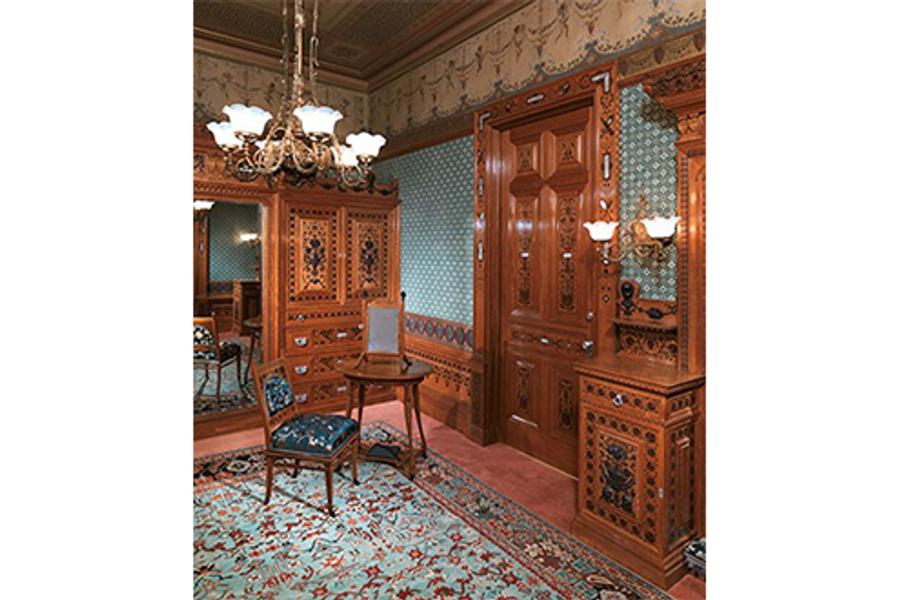Metropolitan Museum Unveils Luxurious Historic Interior from America's Gilded Age
- NEW YORK, New York
- /
- November 23, 2015

The most sumptuous moment in America’s Gilded Age is revealed through the work of some of its most noted design firms in Artistic Furniture of the Gilded Age, opening December 15 at The Metropolitan Museum of Art. The centerpiece of the three-part exhibition is the opulent Worsham-Rockefeller Dressing Room from the New York City house commissioned by art collector and philanthropist Arabella Worsham (later Huntington; ca. 1850–1924). A complete work of art, with its elaborate woodwork and decorations, it is a rare surviving commission by the New York-based cabinetmaker and interior decorator George A. Schastey (1839–1894), who is the subject of the second part of the exhibition.
Although little-known today, Schastey operated a large and successful decorating firm in the late 19th century, catering to some of the nation’s wealthiest individuals. His work and important role will be highlighted by loans from public and private collections, some of them newly attributed to him and never before on public view. Furniture by some of his contemporaries also will be included.
An adjoining gallery will display works by Schastey’s best-known competitor, Herter Brothers, which were created for the firm’s most important commission, the William H. Vanderbilt House. In total, the exhibition will include more than three dozen examples of furniture from America’s Gilded Age. Visitors will gain new insights into the luxurious and artistic interiors found in New York’s wealthiest households in the late 19th century.
Worsham-Rockefeller Dressing Room (Gallery 742)
The Worsham-Rockefeller Dressing Room is a jewel-box of a room and a quintessential expression of the Aesthetic movement, which was in vogue during the late 1870s and early 1880s. The movement stressed the artistic and embraced an amalgamation of different styles, as seen here in the flat, stylized, natural ornamentation in combination with carved flourishes in the Renaissance style. The room comes from the 4 West 54th Street home of Arabella Worsham, mistress (and later, wife) of railroad magnate Collis P. Huntington. She commissioned Schastey to decorate the house in 1881.
The private room, intended solely for Worsham’s use, is a totally cohesive artistic interior with intricate woodwork, a built-in wardrobe, two full-length dressing mirrors, and a vanity en suite with a delicate dressing table, dressing glass, and chairs. Careful study of the ornate marquetry ornamentation—executed in satinwood and purpleheart with mother-of-pearl inlays—reveals a multitude of seashell and pearl motifs that reference Worsham’s great love of pearl jewelry, while depictions of hand mirrors, scissors, hair combs, brooches, necklaces, and earrings suggest the dressing room’s intended purpose. The room exemplifies the work of Schastey’s interior decorating firm and his close relationship with his patrons.
George A. Schastey (The Erving and Joyce Wolf Gallery, Gallery 746)
Artistic Furniture of the Gilded Age: George A. Schastey
Herter Brothers and the William H. Vanderbilt House (Deedee Wigmore Galleries, Gallery 743)










_-3100x100_c.jpg)













